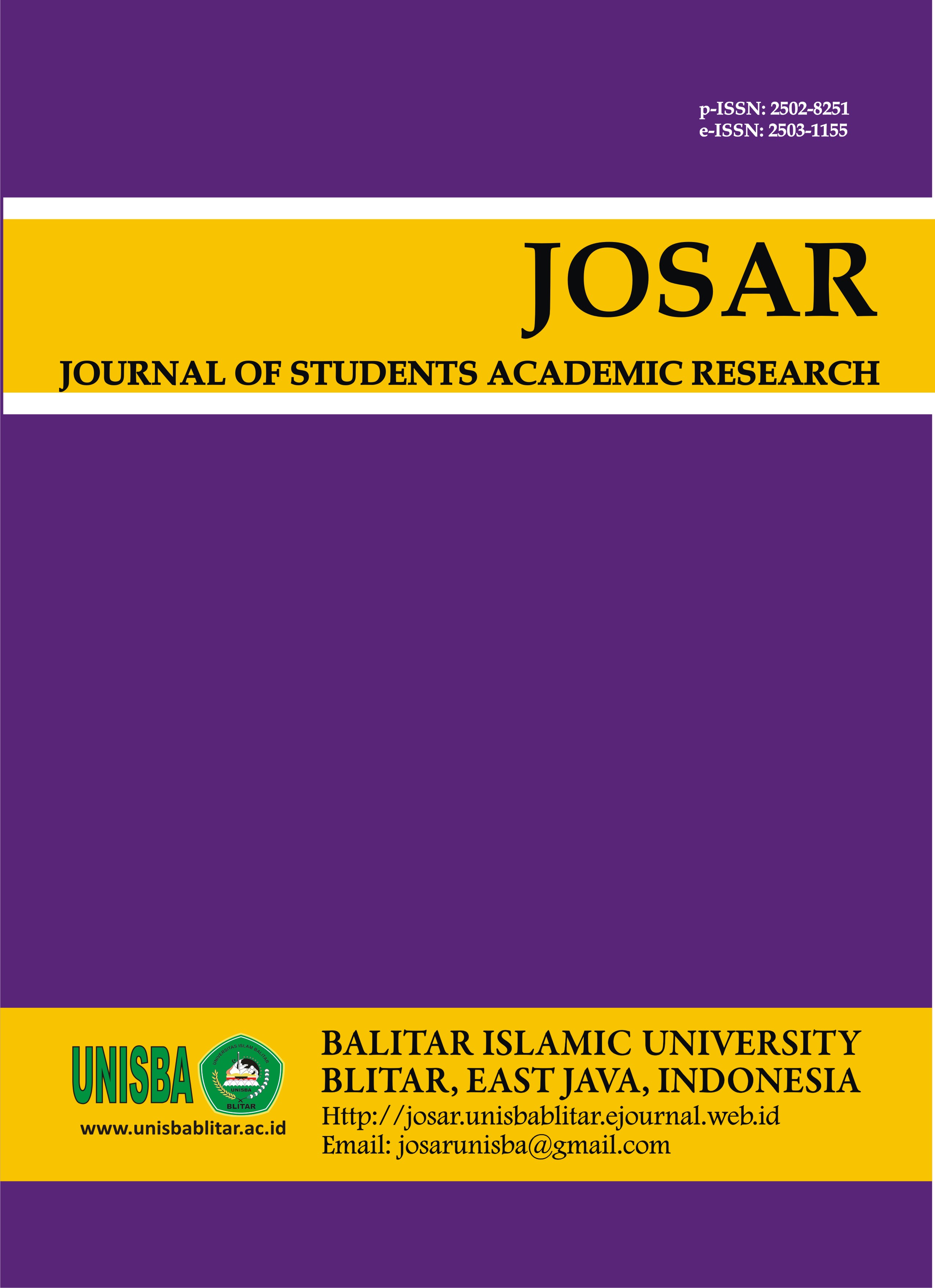DEVELOPMENT OF BLITAR TOURISM PLACE-BASED MATHEMATICS STORY PROBLEM BOOKS
DOI:
https://doi.org/10.35457/josar.v9i1.2625Keywords:
development, story problems, Blitar tourists attractionAbstract
Based on the needs analysis and interviews, it was shown that in learning mathematics, students had difficulty solving word problems related to flat shape material. The purpose of this study was to produce a math word problem book product based on Blitar tourist attractions for learning mathematics with proper flat shape materials. The type of RnD development research that has been developed by Sugiono with six steps, namely (1) looking for potential and problems at SDN Gandekan 2, SDN Kunir 3, and SDN Kunir 2, (2) Conducting research and collection by conducting interviews with class IV teachers, distributing questionnaires student needs and observations of learning mathematics, (3) product design is done by analyzing learning and planning product content, (4) Design validation is carried out by 9 validators consisting of 3 material validators, media validators and language validators, (5) Revision the design was carried out based on expert advice, (6) Conducted readability tests with 5 grade IV students and 5 grade IV teachers. The instrument used in this research is a questionnaire. The feasibility results of the material expert validator are 100%, media experts are 93.5%, and language experts are 91.7%. The results of the teacher's legibility questionnaire obtained a percentage of 95% and the results of the student's readability questionnaire obtained a percentage of 90.4%.
References
Khasanah, Fauzia Anisa. 2018. Pengembangan Soal Cerita Matematika Berbasis Islami pada Materi Perbandingan Kelas VII. Perbandingan: Jurnal Pendidikan Matematika, 3 (2), 56.
Mitari, Osi. 2018. Pengembangan Soal Matematika Model Pisa dengan Konteks Wisata Jakabaring Sport City. UNP: Jurnal pendidikan Matematika, 8(3),34.
Sadiman. 2014. Media Pembelajaran. Bandung: Alfabeta.
Sugiyono. 2013. Metode Penelitian Kuantitatif, Kualitatif, dan RND. Bandung: PT Remaja Rosdakarya.
Downloads
Published
Issue
Section
License
Authors who publish in this journal agree to the following terms:
- Authors retain copyright and grant the journal right of first publication with the work simultaneously licensed under a Creative Commons Attribution License that allows others to share the work with an acknowledgment of the work's authorship and initial publication in this journal.
- Authors are able to enter into separate, additional contractual arrangements for the non-exclusive distribution of the journal's published version of the work (e.g., post it to an institutional repository or publish it in a book), with an acknowledgment of its initial publication in this journal.
- Authors are permitted and encouraged to post their work online (e.g., in institutional repositories or on their website) prior to and during the submission process, as it can lead to productive exchanges, as well as earlier and greater citation of published work (See The Effect of Open Access).
Deprecated: json_decode(): Passing null to parameter #1 ($json) of type string is deprecated in /home/ejournal.unisbablitar.ac.id/public_html/plugins/generic/citations/CitationsPlugin.php on line 68










